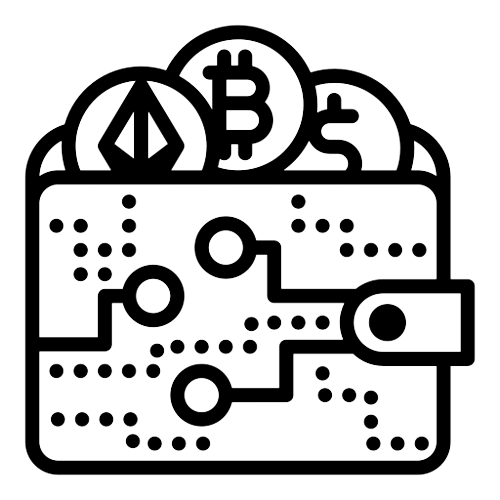
The invention of Bitcoin revolutionized digital currency by solving the double spending problem without needing centralized intermediaries. But for this breakthrough invention to reach its potential, people need secure and convenient ways to store, send, and receive BTC – enter Bitcoin wallets.
Bitcoin wallets serve as your command center to access and control your holdings. They provide the cryptographic tools and interfaces needed to fully harness the benefits of blockchain networks in a user-friendly way.
This guide will demystify the technology empowering Bitcoin wallets to function as your passport into the world of decentralized finance. You’ll learn about:
-Different types of Bitcoin wallets
-How wallets generate and store private keys
-Interacting with the blockchain
-Sending, receiving, and monitoring balances
-Wallet security best practices
-How to choose the right wallet for your needs
By the end, you’ll feel confident selecting and utilizing a Bitcoin wallet as the command center to exercise true financial sovereignty. Let’s do this!
Demystifying Bitcoin Wallet Technology
On a technical level, a Bitcoin wallet is a secure software program, device, or service that provides tools for:
-Generating and storing Bitcoin private and public keys
-Interacting with the Bitcoin blockchain
-Monitoring Bitcoin wallet balances
-Sending and receiving BTC payments
Private keys authorize the transfer of Bitcoin out of your wallet. Think of them like passwords or PINs that prove ownership. Public keys allow deposits into your wallet – like account numbers.
Wallets contain the technology to properly generate, store, and utilize your keys. They also handle all the complex blockchain interactions behind the scenes when transacting.
Importantly, Bitcoin wallets do not store your Bitcoin. Bitcoin exists only on the distributed blockchain ledger itself. Wallets just grant user-friendly access to this innovative network.
When you receive Bitcoin, the transactions are recorded on the blockchain, and your wallet balance updates to reflect the amount based on your keys. The blockchain is the ultimate source of truth in the Bitcoin ecosystem.
Types of Bitcoin Wallets
There are several distinct categories of Bitcoin wallets:

Software – Apps and programs that run on internet-connected devices
Hardware – Physical cold storage devices for offline key management
Paper – Keys printed or written on paper for cold storage
Web/Custodial – Hosted wallets provided by crypto exchanges
Let’s explore how the technology empowers each type to function:
Software Bitcoin Wallets
Software wallets encompass desktop, mobile, and web-based interfaces that handle private key generation and storage as well as blockchain interactions. Here’s an overview:
Desktop – Apps like Bitcoin Core and Atomic that run on laptops/PCs and store keys locally. Offer advanced features.
Mobile – Slimmed-down apps like Coinbase Wallet are designed specifically for smartphone convenience and portability.
Web – Browser-based wallets like Blockchain.com Wallet. Keys are stored in the cloud. Accessible across devices.
Software wallets utilize connected device technology to empower key management and transactions. Desktop versions often integrate directly with blockchain nodes for advanced capabilities.
The connected nature does create potential vulnerabilities to risks like hacks and malware, so security practices are important. However, software options provide a solid blend of features, security, and accessibility when used properly.
Hardware Bitcoin Wallets
Hardware wallets leverage purpose-built physical devices to provide completely offline private key generation, transaction signing, and cold storage. Here’s how they work:
-Transactions initiated on internet-connected devices (laptop, phone, etc)
-Hardware wallet signs transactions offline using the private key
-Signed transaction is transmitted back online to the Bitcoin network
By handling sensitive processes offline, hardware wallets provide excellent resistance to online threats. Devices typically connect via USB and feature a simple interface with buttons and screens. Leading options include Trezor and Ledger.
The main limitations are cost, accessibility, and lack of some convenient features. But hardware wallets offer best-in-class security, especially for substantial holdings.
Paper Bitcoin Wallets
Paper wallets utilize good old-fashioned paper and pen/pencil to generate and record Bitcoin keys. The steps are:
1. Visit a paper wallet generator site to securely create key pair
2. Print or handwrite the keys on paper
3. Fund wallet by sending Bitcoin to the public address
4. Store paper somewhere very secure like a safety deposit box
When spending, you simply import or enter the private key into the software manually by scanning the QR code or typing.
Paper wallets are not as convenient as software or hardware wallets, but the analog medium and offline storage do impart some unique security properties.
Web/Custodial Bitcoin Wallets
Hosted web wallets provided by crypto exchanges simplify the process by managing private keys on your behalf behind the scenes upon account creation.
Rather than you generating and storing keys, the exchange handles them for you using its secure server infrastructure. This allows easy web-based access without having to understand complex crypto security concepts.
The tradeoff is having keys controlled by a centralized third party. You must trust them to properly secure your funds. For this reason, experienced crypto users often prefer non-custodial wallets where they alone control keys.
But for newer users, the simplicity of hosted wallet services can be very appealing compared to having to self-manage keys.
Sending and Receiving Bitcoin Once you have a Bitcoin wallet, sending and receiving BTC is straightforward:
To receive Bitcoin:
1. Share your public wallet address with the sender
2. The sender enters your address into their wallet and sends funds
3. Incoming BTC gets recorded on the blockchain
4. Your wallet detects the updated balance
To send Bitcoin:
1. Enter the recipient’s address into your wallet’s “Send” function
2. Specify the amount to send and submit the transaction
3. Outgoing transfer gets recorded on the blockchain
4. Recipient wallet balance updates to reflect the transaction
Your wallet handles validating the blockchain activity behind the scenes. The network doing the heavy lifting enables user-friendly sending and receiving for non-technical users.
Some wallets even provide the option to scan QR codes to simplify the process further. Welcome to Web 3.0!
Monitoring Your Bitcoin Wallet Balance Bitcoin wallets provide easy ways to monitor your balance to know your total holdings at a glance. Here are some standard features:
Dashboard – Displays total balance across Bitcoin addresses in a single view. Some show fiat equivalents.
Transaction history – Lists recent incoming and outgoing BTC transactions with metadata like dates, times, and confirmations.
Address book – Stores labels and notes for sending/receiving addresses to know who payments came from or went to.
Charts – Graphical representations of wallet balance fluctuations over time. Can show fiat conversions too.
Alerts – Optional notifications for incoming/outgoing transactions and when certain balance thresholds are crossed.
The ability to closely track wallet activity and balances helps inform crypto investment and transaction decisions. Plus, it’s just plain interesting to watch your decentralized money flow in real time!
Securing Your Bitcoin Wallet
While Bitcoin wallets provide exciting functionality, they also come with serious responsibility. Bitcoin transactions are irreversible. If you lose access to your wallet, no one can recover it.
That’s why properly securing your Bitcoin wallet is vital. Here are some research-backed best practices:
-Use super strong unique passwords and enable multi-factor authentication (MFA) for enhanced security.
-Store recovery phrases or backup information securely offline to retain wallet access if you lose your device or forget passwords.
-For large holdings, utilize cold storage such as hardware or paper wallets instead of only using software wallets.
-Only download wallets from official vendors and utilize anti-malware software to avoid malware threats.
-Make redundant secure encrypted backups of wallet login credentials and recovery phrases to prevent loss.
-Continuously educate yourself on evolving crypto security threats and best practices.
Taking prudent precautions helps ensure you safely harness the immense potential of crypto. Your knowledge is the key to unlocking financial sovereignty.
Choosing the Best Bitcoin Wallet
With the array of Bitcoin wallet options available today, here are some key factors to consider when deciding:

Security – Prioritize wallets with robust protocols if safeguarding substantial assets.
Convenience – Custodial, mobile, and web wallets provide the most intuitive accessibility.
Control – Do you want to fully control keys or are you okay with a hosted custodial provider securing them?
Functionality – What capabilities do you need? Software wallets allow more advanced blockchain interactions.
Backup – Ensure the wallet provides backup provisions like seed phrases to restore access if lost.
Cost – Hardware wallets require an upfront purchase. Most software is free.
Community reputation – Select established projects with trust and goodwill within the Bitcoin community.
Here are some specific Bitcoin wallet recommendations based on common user priorities:
Everyday users – Blockchain.com – Simple web and mobile experience great for beginners.
Trader access – Coinbase Wallet – Tight exchange integration useful for active traders.
Security maximizers – Ledger Nano S – Provides robust offline key management.
Industry adoption – BitPay – Widely accepted for direct crypto-to-fiat transactions.
There’s no singular “best” Bitcoin wallet for everyone. Do your thorough research to understand the options and decide what’s most important to you.
Conclusion
The best Bitcoin wallet will serve as your command center to access the world of decentralized finance. The technology empowers you to fully control your digital wealth as your bank.
While various types of wallets exist, they all leverage key cryptography and blockchain interactions to provide convenient and secure Bitcoin tools. With education and prudent security precautions, you can confidently choose a wallet that suits your unique needs and join the monetary revolution.